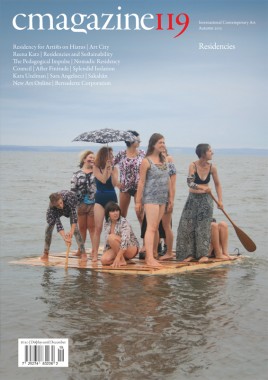
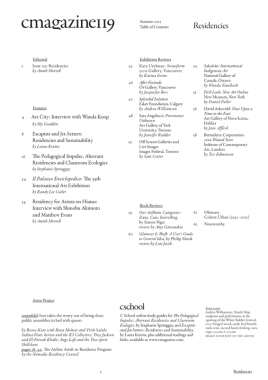
C Magazine 119, Residencies
Softcover, 64 pp., offset 4/1, 210 x 295 mm
Edition of 2200
ISSN 1480-5472
Published by C Magazine
$7.50 ·
Issue 119 includes feature essays by Laura Kenins on “Escapists and Jet-Setters: Residencies and Sustainability”, Stephanie Springgay on “The Pedagogical Impulse: Aberrant Residencies and Classroom Ecologies,” and Randy Lee Cutler on the 55th Venice Biennale, as well as Sky Goodden in conversation with Wanda Koop and an interview by Amish Morrell with Shinobu Akimoto and Matthew Evans. C119 also includes an artist project by the Nomadic Residency Council and the collaborative project “love takes the worry out of being close: public assemblies in bed with queers”; book reviews and reviews of exhibitions by Kara Uzelman, Sara Angelucci, David Askevold, Bernadette Corporation and more.
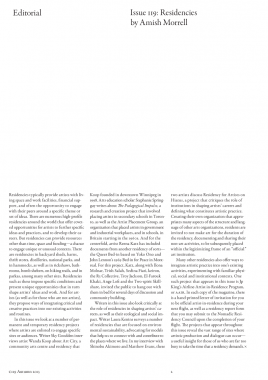
Amish Morrell, Art, Bernadette Corporation, C Magazine, Culture, David Askevold, Distribution, Fashion, Kara Uzelman, Laura Kenins, Matthew Evans, Randy Lee Cutler, Sara Angelucci, Shinobu Akimoto, Sky Goodden, Stephanie Springgay

Essays by Jennifer Doyle. Photography by Michael Wells.
Municipal de Fútbol
Hardcover/boxed, 192 pp., offset 4/1, 260 x 350 x 40 mm
two books, one poster, nine artist lithographs, and a fútbol jersey, in cloth box
English and Spanish
Edition of 1000
ISBN 978-0-9816325-0-6
ISBN 978-0-9816325-1-3
ISBN 978-0-9816325-2-0
Published by Christoph Keller Editions, Textfield
$80.00 $40.00 ·
Distributed in North America by
Distributed Art Publishers
Municipal de Fútbol is a collaborative edition about amateur soccer in Los Angeles—the everyday experience of playing in pick-up games, weekend and night park leagues. Jennifer Doyle, a contributor to frieze and author of Sex Objects: Art and the Dialectics of Desire, has contributed two essays to the books, both with Spanish translation. Housed in an embossed green clothbound box with black ribbon pulls, the edition includes two clothbound books (one of which studies the game as it is played throughout Los Angeles, on hijacked baseball fields, back lots and public squares, and the other of which focuses on one field in particular, the ultra-scrappy and always animated Lafayette Park); one poster; artist lithographs by As-Found, Roderick Buchanan, Mari Eastman, General Idea, Jakob Kolding, Jonathan Monk, Arthur Ou, Peter Piller and Michael Wells; and a European National team adidas fútbol jersey with a “Municipal de Fútbol/Los Angeles Recreation and Parks” embroidered patch and a reflective silk-screened number. The edition is designed by Jonathan Maghen and photography is by Michael Wells.
“Fútbol bubbles up from the ground. It rains down on parks and leaks through walls. It rises like an irrepressible tide, and recedes only when everybody has to go earn some money for themselves and their families. Nobody playing here thinks it’s going to make them rich. Or famoso. It is what happens instead of work.” — Jennifer Doyle
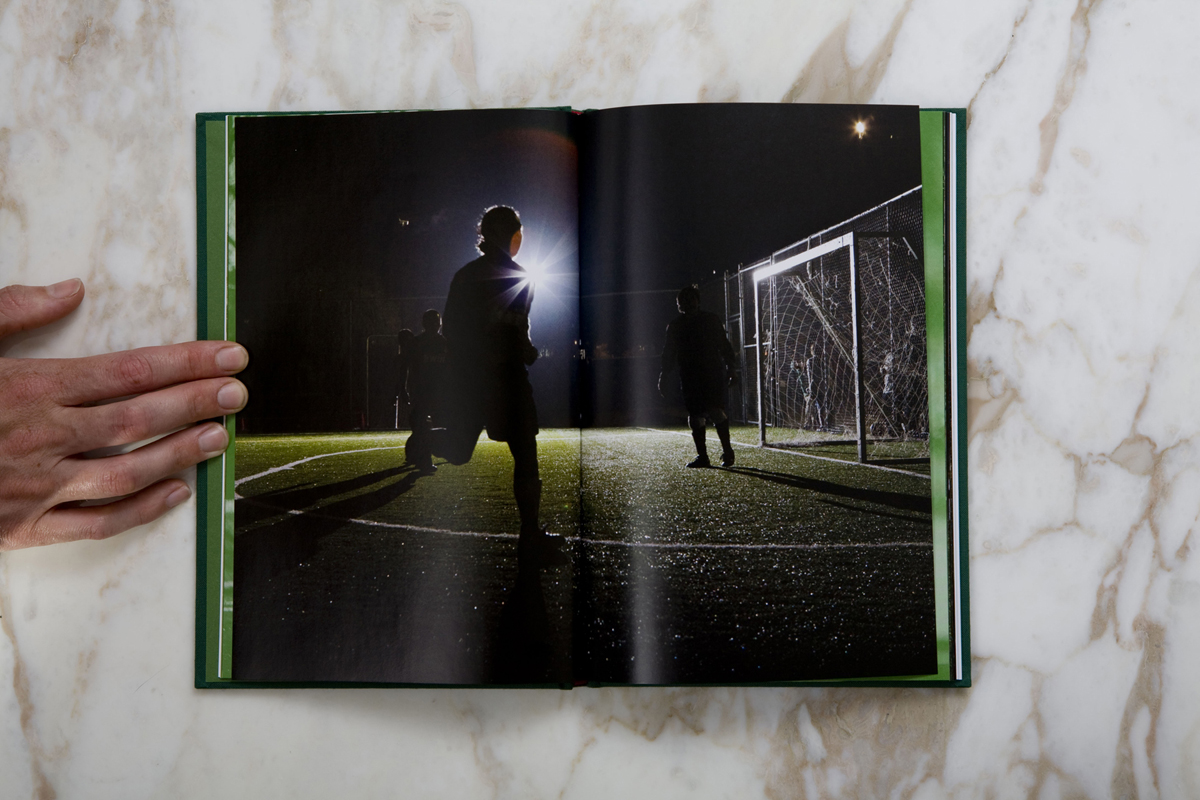

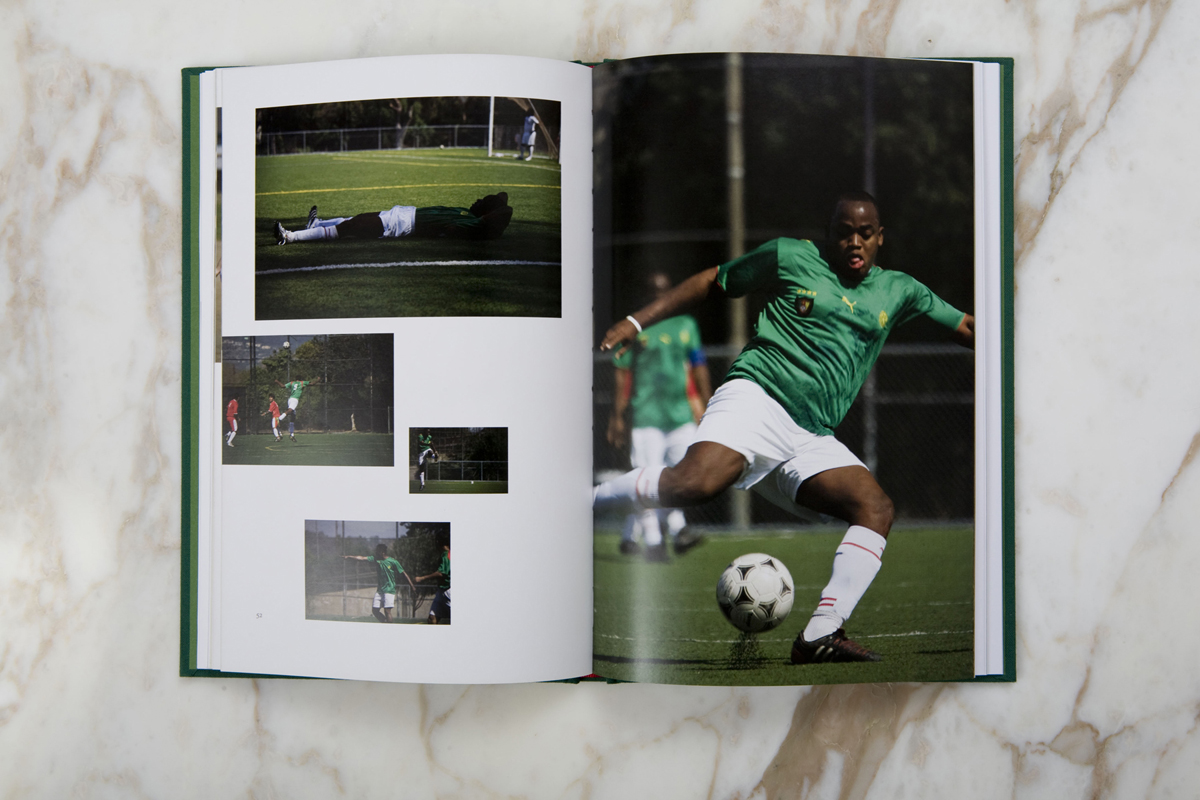


AA Bronson, Art, Arthur Ou, As-Found, Christoph Keller Editions, Criticism, Culture, DAP, Distribution, Fashion, General Idea, Jakob Kolding, Jennifer Doyle, Jonathan Maghen, Jonathan Monk, Mari Eastman, Michael Wells, Peter Piller, Roderick Buchanan, Sandy Yang, Sport, Textfield, Typography
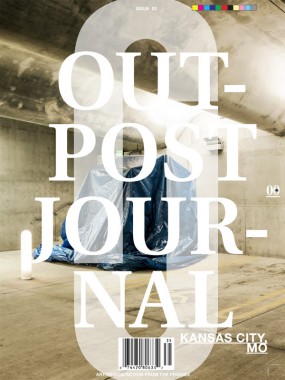

Outpost Journal 3, Kansas City
Softcover, 64 pp. + insert, offset 4/4, 9 x 12 inches
Edition of 500
ISBN 978-0-9836082-2-6
Published by Outpost Journal
$15.00 ·
Outpost is an annual print publication on art, design and community action from cities that have been traditionally underexposed beyond their local contexts. Each beautifully produced and visually engaging issue of Outpost focuses on a single urban location and comes packaged with a limited edition print by an artist from the featured city. Outpost is a journey into the creative heart of a place, and via features like “Secretly Famous” (profiles of the most infamous artsy locals), guerrilla engagements with tourist attractions, historical explorations, mapping projects, and deep dives into artist collectives and organizations, Outpost exposes the myriad ways in which unique local communities arise through creative collaboration and production.
Exploratory and playful, critical with a sense of levity, and inspired by hand-drawn maps, flags, totem poles, poorly pixelated iPhone photos, moody landscapes, and the spirit of adventure, Outpost is dedicated to strengthening ties between communities and spreading new ideas about how creative culture can change our world.

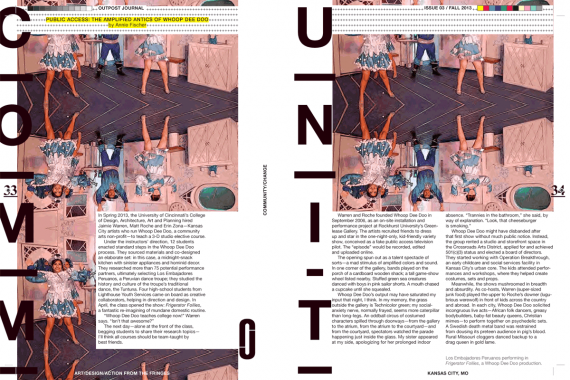

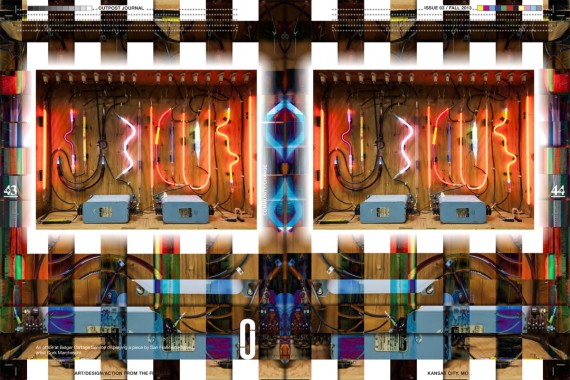

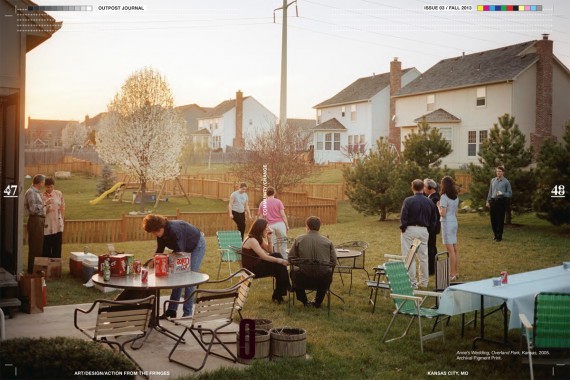

Ahram Park, Aja Blanc, Alex Kwartler, Annie Fischer, Anusha Venkataraman, Archie Scott Gobber, Architecture, Art, Brandon R. Reynolds, Clay Rockefeller, Culture, Dan Maginn, Distribution, Hesse McGraw, Jay Peter Salvas, Kate Hackman, Luke T. Baker, Manya Rubinstein, Matthew Williams, Mike Sinclair, Mike Taylor, Outpost Journal, Pete Oyler, Photography

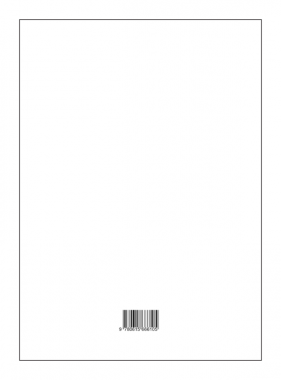
Silvia Prada, The New Modern Hair: A Styling Chart
Softcover, 32 pp., offset 1/1, 200 x 270 mm
Edition of 500, hand numbered
ISBN 978-0-615-66610-5
Published by cultureEDIT and Silvia Prada
$35.00 ·
THE NEW MODERN HAIR: A STYLING CHART features a series of stylized portraits highlighting male hairstyles juxtaposed with geometric drawings. The book pays homage to the barbershop and is an artistic representation of the subtle nuances and cues that help define the male persona, identity and representation within the parameters of visual and popular culture. Through this series of work, Prada is capturing the typecasting and idealized character building that has become ingrained in our minds through media, pop culture and iconography.
The portraits — with names ranging from The Flat Top to Executive Contour — feature commentary and meticulous instructions on how to obtain each look in order to resemble the lifestyle pictured. The geometric drawings, all whimsical remixes of 20th-century art movements such as Bauhaus, De Stijl and Russian Constructivism, highlight the emphasis on the shape for each hairstyle and command a manifesto for the references that each portrait points to.
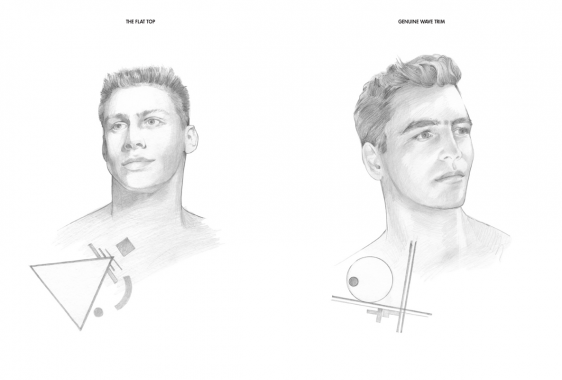





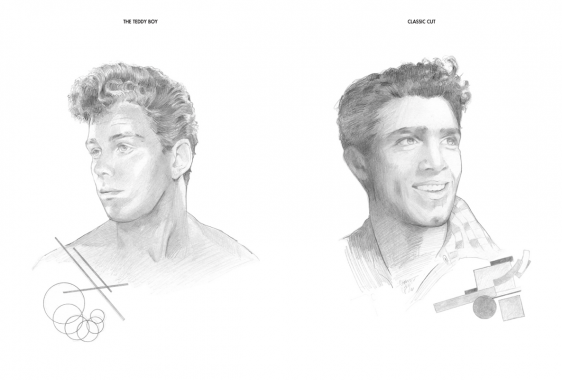
Art, Barbershop, CultureEDIT, Design, Distribution, Fashion, Holli Smith, Joakim Andreasson, Liza Kaplan, Michael Forrey, Miguel Figueroa, Setanta, Silvia Prada, Styling


GARAGISME Magazine 3, Car Cult
Softcover, 144 pp., offset 4/4, 240 x 320 mm
English and French
Edition of 2000
ISBN 978-2-9540897-0-6
Published by GARAGISME Éditions
$13.00 ·
GARAGISME is a biannual publication documenting automobile culture / est une publication semestrielle documenter la culture automobile.
1. Frank Ocean: interview by CG Watkins
2. Stephen Bayley: Gender Bending Engines by Alice Pfeiffer
3. Matthew Day Jackson: The work of many hands by Monica Uszerowicz
4. Mathieu Mercier: Car Problems by Romaric Tisserand
5. Timothée Chaillou: Fragrance, a curated selection of artworks
6. The Craft Agitators: portraits of car crafters by Tania Feghali and CG Watkins
7. Il y a des morts élégantes: story by François Coquerel and Oscar Coop Phane
8. Art and Industry: essay by Rose-Marie Barrientos
9. Mégane: portfolio by Fanny Schlichter
10. Hellbenders: portfolio by Joan Cuenco
11. Concrete Island: portfolio by Devin Blair
12. Driving Me Crazy: portfolio by Csilla Klenyánszki
13. Don’t Walk: portfolio by Adrien Toubiana, Antoine Roux and Thomas Cristiani
14. Carhenge or the end of an american dream: essay by Camille Ayme
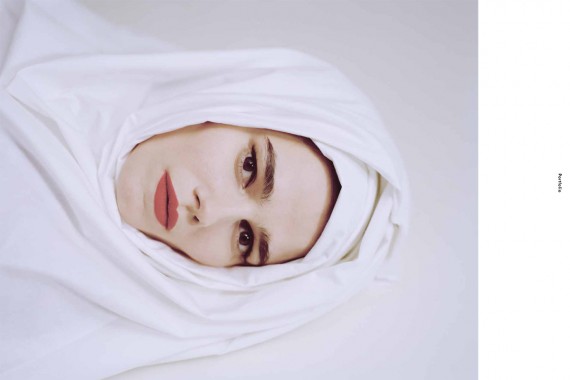




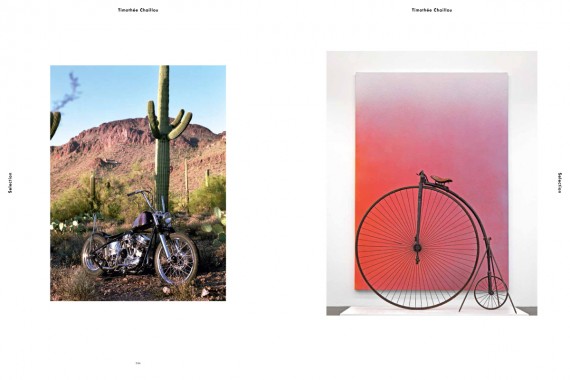
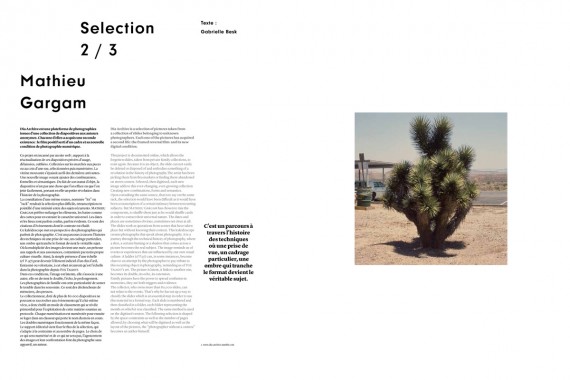
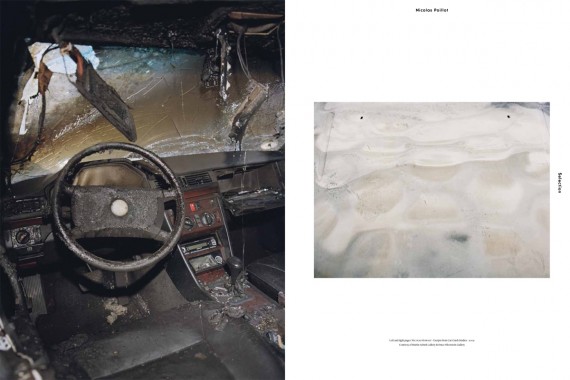
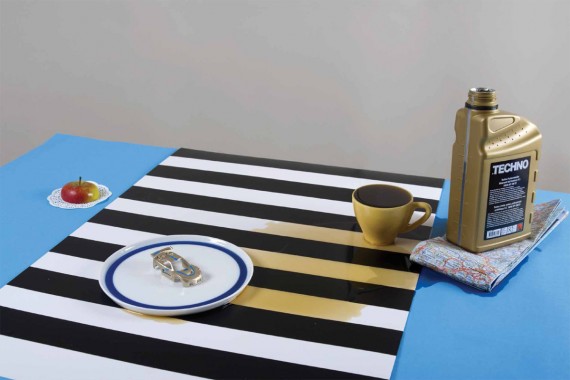
Adrien Toubiana, Alice Pfeiffer, Anne-Sophie Ferrari, Antoine Roux, Camille Ayme, Cars, CG Watkins, Csilla Klenyánszki, Culture, Devin Blair, Distribution, Fanny Schlichter, François Coquerel, Frank Ocean, Garage Grotesk, GARAGISME Éditions, Gilles Uzan, Joan Cuenco, Mathieu Mercier, Matthew Day Jackson, Monica Uszerowicz, Oscar Coop Phane, Romaric Tisserand, Rose-Marie Barrientos, Stephen Bayley, Tania Feghali, Thomas Cristiani, Timothée Chaillou
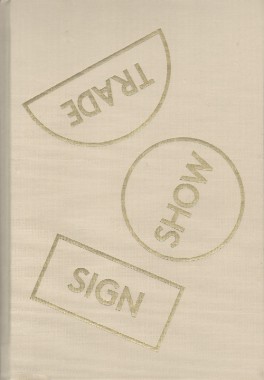

Thomas Macker, SIGN SHOW TRADE
Hardcover, 88 pp., offset 4/4, 180 x 265 mm
Edition of 500
ISBN 978-0-615-76630-0
Published by In The Pines Books
$45.00 ·
Conceptually, the publication is structured horizontally, with two formally similar series of photographic works bridged by photographs and sculptural objects that offer a dialogic counterpoint to the main series. The first group of photographs focuses around seed signs and sacks advertising distinct crop strains of genetically modified corn and soy. The individual sacks and signs are set up at the center of still life compositions, staged in the basement of Macker’s home in Jackson Hole, Wyoming. The sacks hang from the fiberglass insulation and wooden boards of the basement ceiling, while the signs are placed in gravel on the floor. The backdrops, often constructed by hanging used textiles against the gold-painted walls of the basement, offer glimpses of American nostalgia — old quilts featuring Winnie The Pooh, The Transformers, and Disney Princesses, along with faded floral sheets, tie-dye hangings, penguins. The series is presented as a calendar of images; each photograph is named for a month of the year, with an additional one for each season. The repetition in the photographs acts as a meditation on the ways we mark time, while the content of the images posits company branding as a primary signifier of cultural and personal identity: nostalgia and desire for meaning coopted by companies that alter the foundation of our sustenance.
In Macker’s work, the ‘seed’ — as altered commodity — locates the collision between the idea of the natural world as something outside and other than human, and the natural world as what we are (as animals who eat food grown from seeds, eat animals who have eaten plants grown from seeds, breathe air full of oxygen created by photosynthesis, and on and on). This space of collision and contradiction is where Macker argues we reside, and the photographic and sculptural pieces that bridge the two still life series in the exhibition offer a glimpse of the effects of that lived contradiction. Dog God | Man Camp | Big Piney, WY shows a coyote impaled by a pole and posed with its head up (as if howling), a scene Macker found and documented next to one of the “Man Camps” of trailers that have sprung up throughout the Gaslands of Wyoming, the Dakotas, Colorado and Iowa to house temporary gas line workers. Another shows the snow-filled landscape where Matthew Shephard was beaten and killed, the only marker of that moment of cultural mourning and instigator of progressive action now a gas company pole. Bumper stickers Macker stole from trucks in Wyoming and printed onto vintage glass tiles depict bikini-clad women alongside text that reads ‘Just Frack It’, and, a digitally rendered bust of a disembodied pregnant torso hangs next to a digitally rendered image of a Molatov cocktail. Reproduction, destruction, re-birth, identity, and verbal and physical languages of dominance comingle with cultural hope and yearning — a yearning that always seems to leave violence in its wake.
In the second still life series, the seed signs have been replaced by gas company signage. These signs, stolen by Macker during drives across the Gaslands, functioned as markers for the temporary roadways that crisscross the landscape where gas lines are in construction. In this series, the signs rest on top of a wooden crate instead of being placed in gravel, and the backdrop is now constructed of brown carpet. In front of the carpet, Macker has hung reproductions of 19th and 20th century artwork mythologizing woodcutters. Behind a Unit Drilling Company sign directing us towards Rig 24, we see Winslow Homer’s The Woodcutter, here featured on a living room wall as part of an interior design advertisement. In Der Holzfäller, Ferdinand Hodler, 1910, a Danger Benzene Cancer Hazard sign accompanied by a potted plant stands in front of Ferdinand Hodler’s Der Holzfäller. Co-opting these already-reproduced artworks, Macker highlights the historic glorification of human dominance over nature, as well as the problematic placement of the artist within this glorification, as a symbol and actor of these same problematic humanist ideals. The scenes are constructed to be visually satisfying, uncomfortable, humorous, claustrophobic, and unexpectedly personal, reflecting our continued desire to feel communal pride in our accomplishments, as well as the consequences of a system in which the structure for expansion we have created necessitates an unwillingness to recognize the fallibility or responsibility of power.







Agriculture, Art, Corn, Distribution, Ferdinand Hodler, Fracking, GMOs, Halliburton, In The Pines Books, Jackson Hole, LL Brown, Monsanto, Oil, Photography, Soy, Thomas Macker, Wyoming

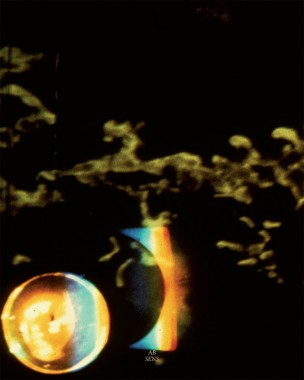
Tony Martin, The Variable Place
Edited by Camilla Padgitt-Coles and Nicky Mao
Softcover, 104 pp., offset 4/4, 8 x 10 inches
Edition of 350
Published by AB-SENS PRESS
$28.00 ·
Tony Martin arrived to San Francisco in 1962, promptly forging creative alliances and lifetime friendships with “new music” people Morton Subotnick, Pauline Oliveros, and Ramon Sender. When the San Francisco Tape Music Center moved to its location at 321 Divisadero St., Martin was invited by co-directors Sender and Subotnick to become the Visual Director. With special attention paid to working in the tape music medium, as well as performing regularly, they joined with Mills Center for Contemporary Music in ‘67. During the SFTMC days Martin was responsible for numerous visual compositions, including Terry Riley’s In C performance, as well as Sender’s Desert Ambulance. Martin was deeply engaged in experimenting with light via overhead and slide projectors, mixing paint, oil, water, and objects to build his light compositions. His following grew as a culture of psychedelia pervaded the 1960s and his light shows became popular amongst bands such as Jefferson Airplane and Grateful Dead. During this time he began to build “interactions” by engineering entire environments using sensors and mirrors. By the late ’60s he returned to New York City where he continued his focus for these types of installations; time and time again synthesizing his technological skills with painting as a moving image. A painter at heart, he continued with consideration of his experience working with his viewer-activated sculptures, as well as his devotion to the medium of light — maintaining a thread that binds all aspects of his work. His latest piece entitled Proximity Switched Installation (2012) is a clear culmination of a lifetime of experimentation/production. A video demonstration of this installation is available to view online and includes musical accompaniment by Compound Eye (Spring Press).
The Variable Place is the first book of its kind to tie together over 50 years of Tony Martin’s work. It includes an in-depth interview with Martin by Will Cameron, Albert Herter and the editors. As well as a special introduction by long-time friend/collaborator Pauline Oliveros.


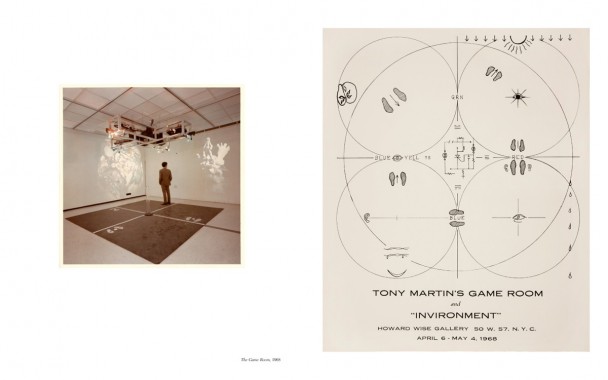
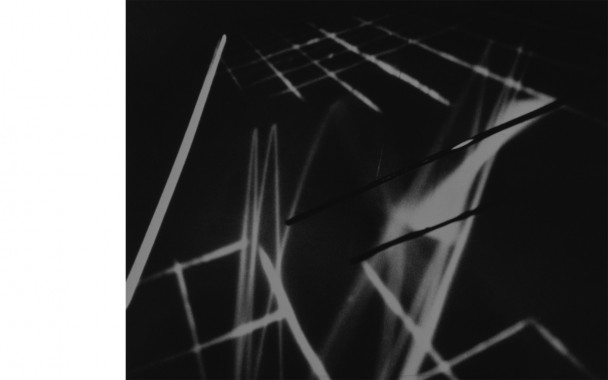

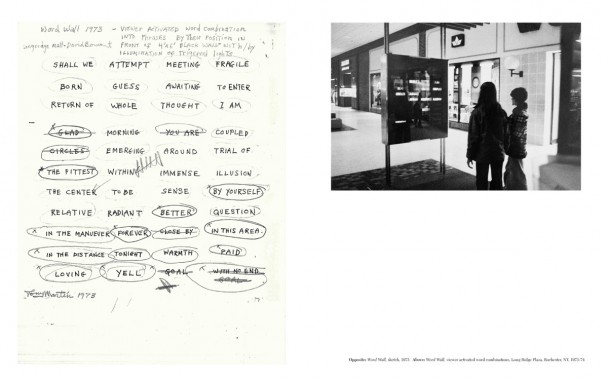
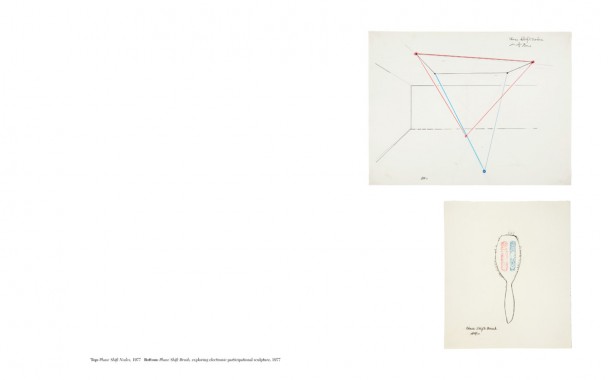
AB-SENS PRESS, Albert Herter, Art, Camilla Padgitt-Coles, Compound Eye, Culture, Design, Distribution, Morton Subotnick, Music, Nicky Mao, Pauline Oliveros, Performance, Photography, Ramon Sender, San Francisco, Terry Riley, Tony Martin, Will Cameron

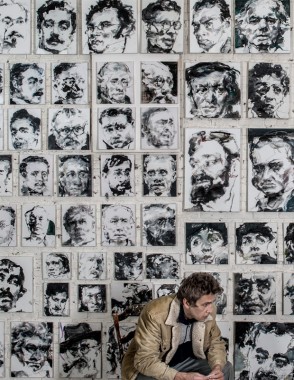
Sam Dillemans, Authors
Hardcover, 222 pp., offset 4/4, 250 x 325 mm
English and Dutch
Edition of 2000
ISBN 978-94-9069-399-2
Published by MER. Paper Kunsthalle
$52.00 ·
In the past years Sam Dillemans has painted some 300 portraits, mostly of influential writers, but also of scientists, composers and singers. In his typical dynamic and fluent style Dillemans completed the 300 portraits almost in one go. Most of the portraits are painted in black and white with smooth, volatile lines; others are touched up with some rare subtle brushstrokes in colour. Whether the subject is recognizable or not depends on the viewer and on how much the artists is prepared to divulge in his impressive paintings. On the occasion of the exhibition that opened on April 19th in the Castle of Gaasbeek, the paintings of the series Authors have been collected in the eponym book, which was published on the opening day of the exhibition by MER. Paper Kunsthalle.

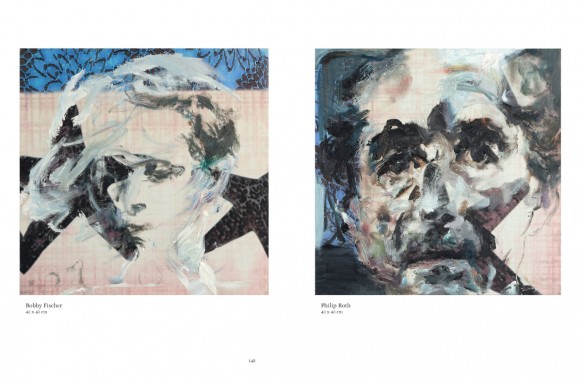

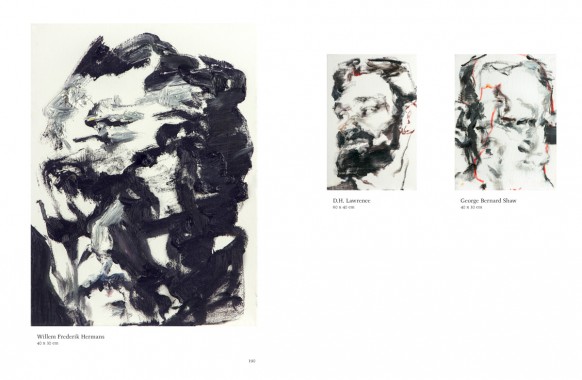

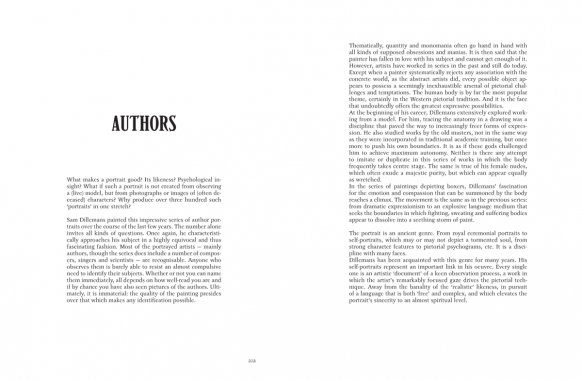


Art, Culture, Distribution, Duncan Brown, Luc Derycke, Luc Vanackere, MER. Paper Kunsthalle, Painting, Sam Dillemans, Wim van Eesbeek


Michael Fullerton, Pleasure In Nonsense
Softcover, 208 pp., offset 4/4, 220 x 270 mm
Edition of 2000
ISBN 978-94-9069-363-3
Published by MER. Paper Kunsthalle
$39.00 ·
This book, Michael Fullerton’s first monograph, and the artist’s work is concerned with how political and historical information is recorded and disseminated, in particular through the medium of the oil painted portrait. Other mediums of communication, such as billboard posters, wall texts and the raw materials used for analogue tape and audio recording are also employed. Fullerton’s choice of subjects range from the overtly political to people of varied social class and unexpected cultural histories. Underpinning Fullerton’s work is an examination of the relationships between people and the forces at play in those relationships, whether that be social relations involving authority or power, or relationship dynamics that work on a more emotional, psychological or aesthetic level.
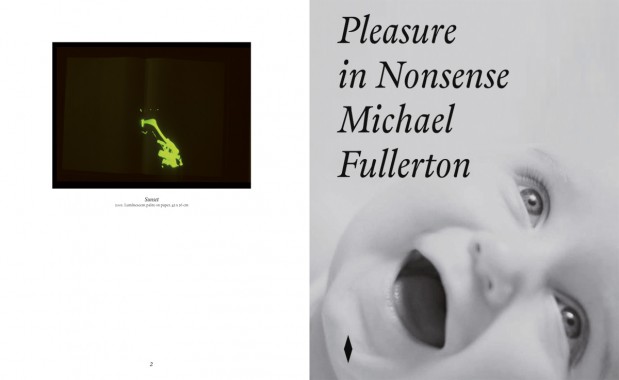


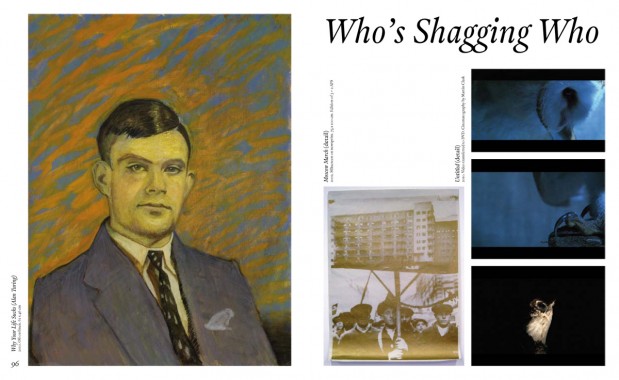


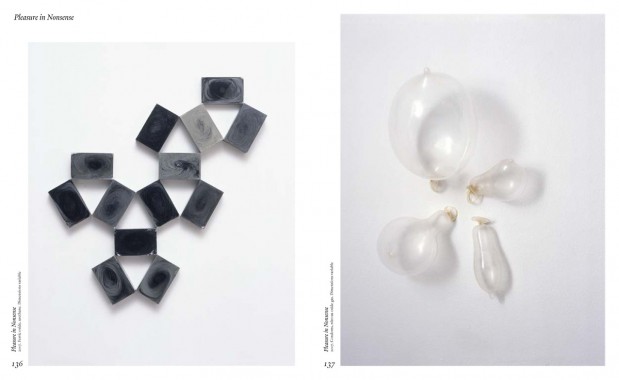
Alan Dimmick, Andy Keate, Art, Culture, Distribution, John Calcutt, Kathryn Braganza, Luc Derycke, MER. Paper Kunsthalle, Michael Fullerton, Painting


Luciano Fabro, From Contratto Sociale to Colonna di Genk
Hardcover, 56 pp. + DVD, offset 4/4, 170 x 220 mm
Edition of 800
ISBN 978-94-9069-362-6
Published by MER. Paper Kunsthalle
$32.00 ·
Between 1990 and 2007, Italian artist Luciano Fabro (1936-2007) created sixteen publicly commissioned works. This book, along with an accompanying dvd, focuses on the life and works of this extraordinary artist, and brings homage to Fabro’s latest realization La Colonna di Genk. This intriguing work commissioned by the city of Genk (B) visibly illustrates Fabro’s way of thinking and creation process. The accompanying dvd reveals biographical elements as well as the making of and the festive inauguration of La Colonna during Labour Day on May the 1st 2008. The inauguration took place on the renewed Genk Stadsplein (B), just ten months prior to Fabro’s death.
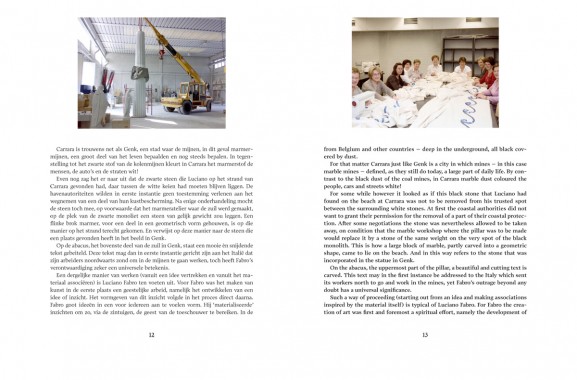

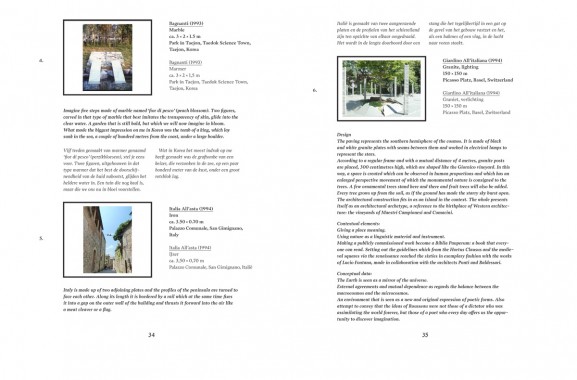
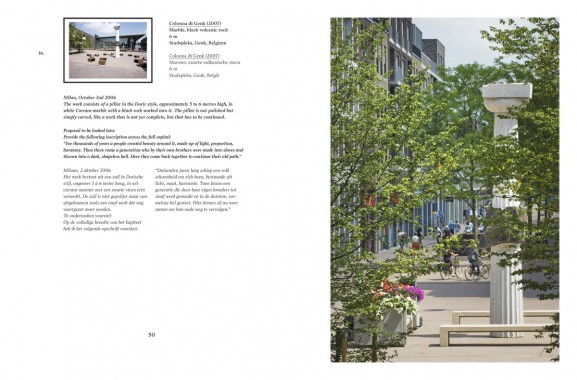

Architecture, Art, Distribution, Kristof Reulens, Luc Derycke, Luciano Fabro, MER. Paper Kunsthalle, Sculpture, Thérèse Legierse
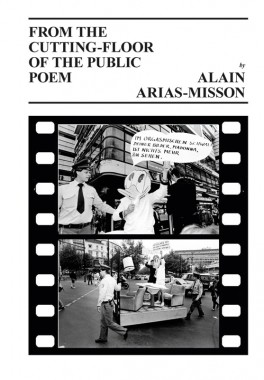
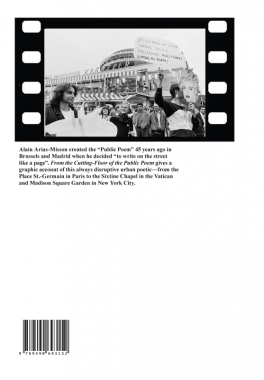
Alain Arias-Misson, From the Cutting-Floor of the Public Poem
Softcover, 80 pp., offset 4/1, 165 x 245 mm
Edition of 2000
ISBN 978-94-9069-315-2
Published by MER. Paper Kunsthalle
$32.00 ·
Alain Arias-Misson created the “Public Poem” 45 years ago in Brussels and Madrid when he decided “to write on the street like a page.” From the Cutting-Floor of the Public Poem gives a graphic account of this always disruptive urban poet — from the Place St.-Germain in Paris to the Sixtine Chapel in the Vatican and Madison Square Garden in New York City.



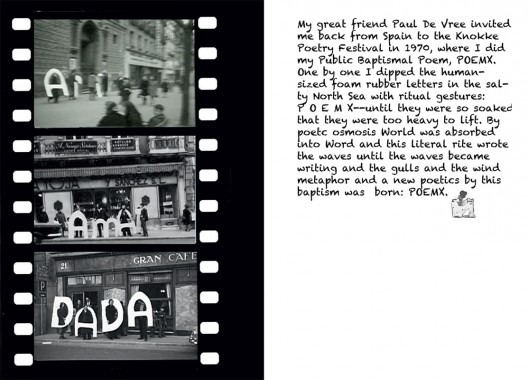

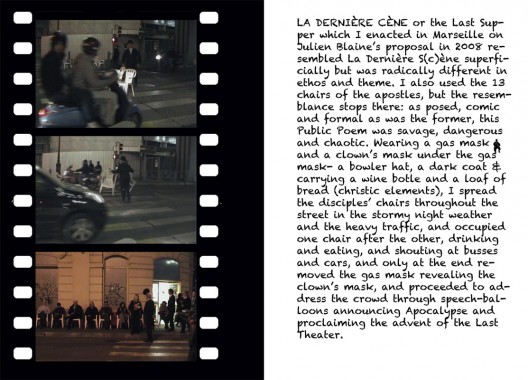

Alain Arias-Misson, Art, Distribution, MER. Paper Kunsthalle, New York, Performance, Poetry, Roger D'Hondt

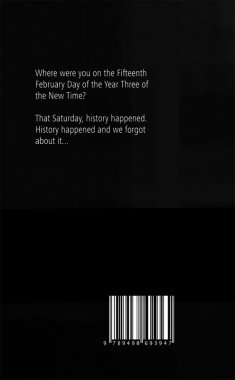
Herman Asselberghs and Dieter Lesage, After Empire
Softcover, 256 pp., offset 1/1, 110 x 180 mm
Edition of 2000
ISBN 978-94-9069-394-7
Published by MER. Paper Kunsthalle
$20.00 ·
After Empire is published on the occasion of the group show ‘Blijven Kijken’, an exhibition curated by Pieter Van Bogaert at M-Museum on (dis)appearing images and the boundaries of representation. Central in the exhibition is the 2010 video After Empire by Herman Asselberghs. This video is a tentative reflection on positive forms of collective resistance against war as well as emancipatory representations concerned with it. This publication considers a possible alternative for an iconic image drawn from our collective memory: a hijacked plane hitting the second tower of the WTC in 2001, New York. The book proposes an alternative for our collective history: the 15th of February 2003. On that day 30 million citizens across the planet marched against the unilateral decision by the American government to start a pre-emptive war against Iraq under the auspices of “the war on terrorism”. 2/15 was the greatest peace demonstration since the Vietnam war and probably the biggest protest march ever to take place. The war did happen, but this world day of resistance could very well mark the beginning of the 21st century. 2/15 instead of 9/11: a key date in the writing of a history of global contestation in the struggle between two superpowers: the United States against public opinion worldwide.
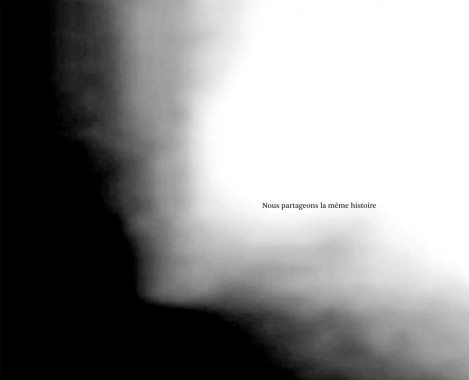
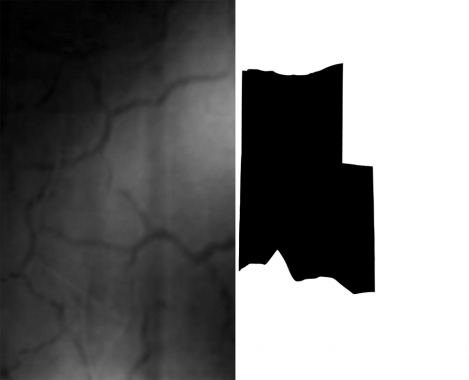


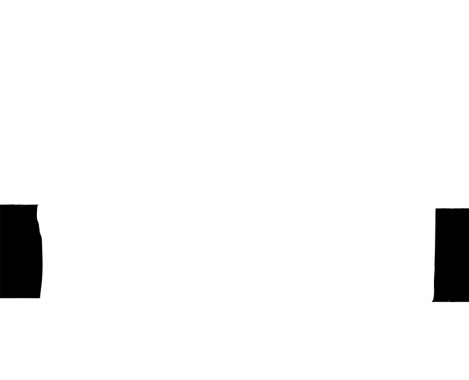
Art, Criticism, Dieter Lesage, Distribution, Herman Asselberghs, Iraq, M-Museum, MER. Paper Kunsthalle, Philosophy, Pieter Van Bogaert, Politics
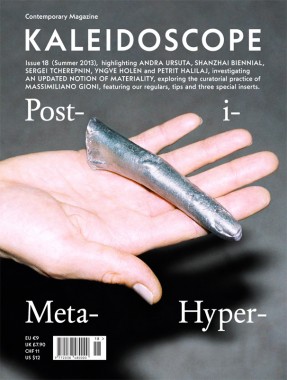
KALEIDOSCOPE Magazine 18 — Summer 2013
Softcover, 228 pp. + three special inserts, offset 4/4, 220 x 287 mm
English edition
ISSN 2038-4807
Published by KALEIDOSCOPE Press
$12.00 ·
KALEIDOSCOPE Issue 18 (summer 2013), highlighting Andra Ursuta, Shanzhai Biennial, Sergei Tcherepnin, Yngve Holen and Petrit Halilaj; investigating an updated notion of materiality; exploring the curatorial practice of Massimiliano Gioni; featuring our regulars, tips, and three special inserts.
HIGHLIGHTS
The issue’s opening section of HIGHLIGHTS features Andra Ursuta, whose practice is understood by Joanna Fiduccia as committed to annihilating sculpture’s distance from our world; the fashion-label-cum-art-project Shanzhai Biennial, whose tangible products, explains Kevin McGarry, are eclipsed by their collateral evidence; Sergei Tcherepnin, described by Lawrence Kumpf as creating a complex system of bodily configurations and social situations; Yngve Holen, whose works are read by Pablo Larios as sentient beings concerned with frustrated circulation, technological growth and associative networking; and Petrit Halilaj whose practice is framed by Elena Filipovic as rejecting pathos in favor of an intimate and critical inflection of the political.
MAIN THEME
This section, titled Post-i-Meta-Hyper-Materiality, brings together a substantial group of artists who introduce the concept of emotional and bodily alienation within the discourse dominated by the readymade, corporate art pursued by many of their digital-native peers. The elusive sculptural works of Nicholas Deshayes, Steve Bishop, Marlie Mul, Magali Reus, Ben Schumacher and Alice Channer are framed by Karen Archey as deeply engaged with materiality and production processes and imbued with bodily allusions, while also commenting on issues of abstraction, dispersion, consumption and technology. A visual essay curated by fashion futurologist Veronica So reveals how, from sculptures designed by digital simulations to edible candies formed by human body scans, the appearance of 3D printing kicks off a range of playful experiments with technology and originality. Also in this section, Alice Channer talks to Rebecca Geldard about the starting point of each work, which she describes as “a moment of material seduction”; and artists Pamela Rosenkratz and Alisa Baremboym discuss physicality versus technology and the shifting boundaries between our bodies and the external world in a cross-interview by Ruba Katrib.
MONO
Comprising an essay by Jonathan Griffin, an interview by Francesco Manacorda and a photographic portrait by Ari Marcopoulos, this issue’s MONO is devoted to the Director of the International Art Exhibition at this year’s Venice Biennale, Massimiliano Gioni. Pragmatic bordering on opportunistic throughout his adventurous career, and yet described as “a hopeless romantic” by one of his most affectionate colleagues, Gioni states that his own failure to understand is what fuels his interest in art. Generally averse to chronological or historically comprehensive presentations and departing from the tautology of the masterpiece, he is instead a proponent of Outsider and self-taught art. His exhibitions, which he defines as products of a collective intelligence, are often concerned with the position of art within our image-based society, as well as the sites of an exploration of interior worlds, dream states and psychological visions.
REGULARS
Finally, it this issue’s REGULARS, Hans Ulrich Obrist and Simon Castets interview emerging artist Amalia Ulman; Gary Carrion-Murayari stages a three-way interview with Valentin Carron and Isabelle Cornaro; Felix Burrichter meets design critic Alice Rawsthorn; Leung Chi Wo, David Clarke and Lam Tung-pang engage in a round table about the art scene in Hong Kong then and now; finally, Laura McLean-Ferristraces the legacy of folk in British contemporary art from the exhibition Black Eyes and Lemonade to the practice of Jeremy Deller.
SPECIAL INSERTS
The edition is enriched by our seasonal TIPS on following, reading, listening, stopping by, meeting and visiting; as well as by three SPECIAL INSERTS, including a selection of paintings by Benjamin Senior, photographs by Jochen Lempert and collages by Sterling Ruby.

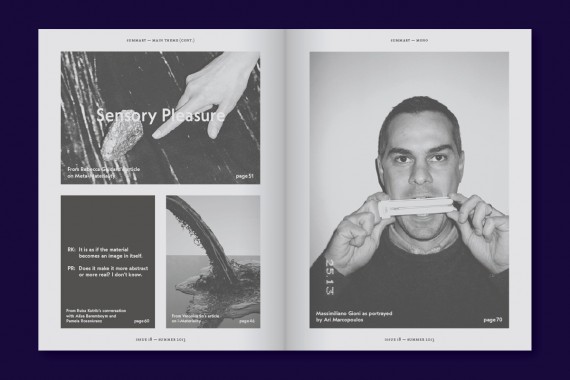



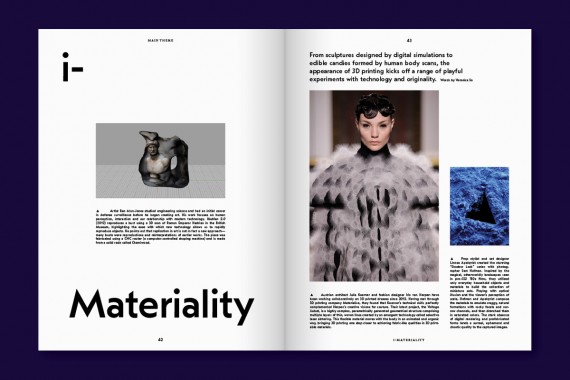
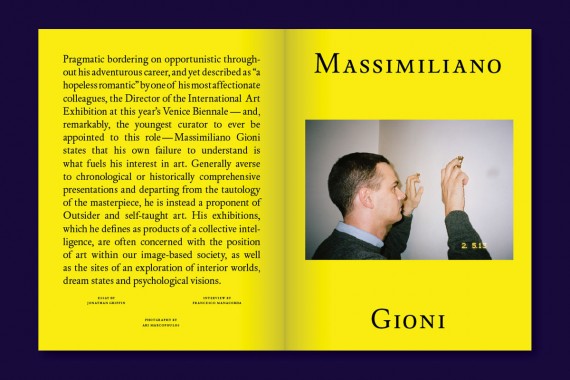

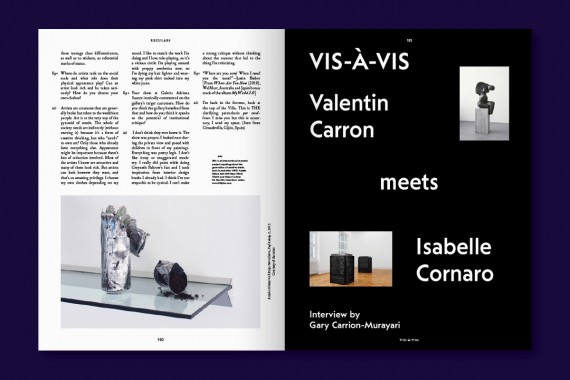
Alice Channer, Alice Rawsthorn, Alisa Baremboym, Amalia Ulman, amela Rosenkratz, Andra Ursuta, Ari Marcopoulos, Art, Ben Schumacher, Benjamin Senior, Culture, David Clarke, Distribution, Elena Filipovic, Felix Burrichter, Francesco Manacorda, Gary Carrion-Murayari, Hans Ulrich Obrist, Isabelle Cornaro, Jeremy Deller, Joanna Fiduccia, Jochen Lempert, Jonathan Griffin, KALEIDOSCOPE Press, Karen Archey, Kevin McGarry, Lam Tung-pang, Laura McLean-Ferristraces, Lawrence Kumpf, Leung Chi Wo, Magali Reus, Marlie Mul, Massimiliano Gioni, Nicholas Deshayes, Pablo Larios, Petrit Halilaj, Rebecca Geldard, Ruba Katrib, Sergei Tcherepnin, Shanzhai Biennial, Simon Castets, Sterling Ruby, Steve Bishop, Valentin Carron, Veronica So, Yngve Holen











































































































